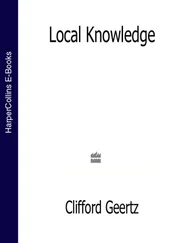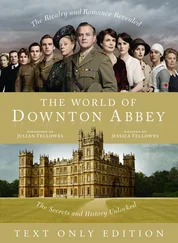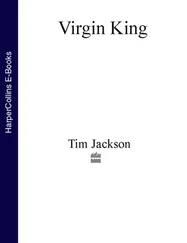1 ...7 8 9 11 12 13 ...30 Stanley had not yet met Lamb and knew little of him or the intrigues about the painting. So he not unnaturally assumed that Lamb had offered the £30 because he admired the painting; which he did, but this was not the reason for the offer. Lamb felt that an injustice had been done to a young and worthwhile painter. Although he could ill afford the £30, he ventured on the purchase because he was convinced he could resell the painting at a higher price and thereby blaze abroad the obtuseness of a self-appointed arbiter of taste. In much the same way he had taken up public cudgels the previous year in a battle with French officialdom to support young Jacob Epstein’s controversial tomb in Paris of Oscar Wilde.
Stanley delivered the canvas on 3 November to Lamb’s London studio at the Vale of Health Hotel, characteristically insisting on precise details of how to get there. 5The Vale of Health had been developed in a restful hollow of Hampstead Heath – Leigh Hunt had once lived there and the young Keats wrote poetry there – and the subsequent hotel included artists’ studios arranged in pairs each side of a central staircase. Lamb’s was on the third floor. Outside, lawn terraces overlooked the Heath and a small lake, a scene which forms the view through the window in Lamb’s celebrated portrait of Lytton Strachey. 6However, it was not long before Londoners discovered the hotel’s position on the edge of ‘Appy ‘Ampstead ‘Eath and turned it into a holiday pub with a funfair adjacent and drunken fighting at closing time.
None of this troubled the steely and imperturbable Lamb, who reported to friends his first meeting with Stanley with a mixture of amusement and astonishment. As Lamb took Stanley that afternoon round the galleries of London, he who had spent years in France worshipping in the studios of painters he admired, suddenly found himself elevated to the status of a respected guru. They called at the imposing Chelsea home of Darsie Japp, who had overlapped with Stanley at the Slade in 1908 – 9 and who had already bought his Two Girls and a Beehive . 7Stanley was awed by Japp’s background, prosperity and savoir-faire. To him Japp, like Lamb, ‘knew everything’.
A bemused Lamb sent Apple Gatherers to Michael Sadler in Leeds, suggesting £60 and assuring Stanley that he would give him the extra. Stanley, who had accepted with equanimity the rejection of the painting, was surprised and gratified, and told the Raverats: ‘Lamb has sent the preliminary payment of £30. If he has to sell it – and he thinks he will – any profit he makes by so doing he will give me. He is very good. He said: “What can you expect from these fashion-mongers?” But I do not altogether blame the Society.’ 8
Worried that it was lack of ready cash which was preventing Lamb from being able to retain a painting he admired, Stanley courteously told Lamb in his quaint ‘business-letter’ style:
I feel crossed [pulled in two directions] about that picture because all the time I am wanting money I am wanting you to keep the picture. You understand I can wait. You see, for another year or so I shall not be having to spend a lot – I seldom do – and if I live as I have been doing until now I shall be able to get through without danger. I tell you that I do not worry about money but I [have to] think about it. 9
Sadler was prepared to offer only fifty guineas, a sum he had recently received for some extra-mural work. But in the meantime Edward Marsh had come forward as a bidder. At the instigation of Mark Gertler he had been keen to acquire a Stanley Spencer work. Apple Gatherers was in his sights when Stanley and Gertler fell out over their opinions of Cézanne. Marsh felt he could not offend Gertler, whose work he equally admired, and had tactfully to wait until the tiff exhausted itself. He then invited Stanley to spend a weekend at his apartment in Raymond Buildings, Gray’s Inn. Stanley was impressed: ‘I spent a weekend with Eddie Marsh. I had Darsie Japp and Gaudier [Brzeska] for dinner one day and Gertler and a man named Nash *the next. … Marsh took me to tea at a Miss Nesbitt’s; the elder of the two Miss Nesbitts is very nice. She is an actress and she seems to be so unlike what I imagined an actress to be.’ 10Cathleen Nesbitt was then on the threshold of her long and distinguished stage career. She was deeply in love with Rupert Brooke.
It must have been on that occasion that Marsh ventured to Stanley his wish to purchase Apple Gatherers. Like Sadler, he could not offer more than fifty guineas and Stanley would have to wait for payment until the next allocation of the Perceval pension. Stanley reported the offer to Lamb. He let Stanley decide. Stanley chose Marsh. †
The deal was completed in December. Marsh hung the painting in the small guest bedroom of his flat. It joined his embryo collection of contemporary artists – Augustus John, Duncan Grant, Mark Gertler – among his considerable collection of quiet eighteenth-and nineteenth-century works. Seeing them there Paul Nash commented: ‘Apparently there has been a recent phase among the English progressives which might be called “The Apotheosis of the Dwarf”. Groups of dwarves by Gertler and Spencer seemed to menace me from every wall.” 14Rupert Brooke, returning from Tahiti in June of 1914 and staying in the guest room, promptly christened the painting ‘the Bogeys’. This, thought Marsh, deflated, was ‘a disappointing reaction’. 15
But for Stanley these were halcyon years of both hope and accomplishment. He remained at Fernlea but acquired a ‘studio’, Wistaria Cottage, a then empty Georgian house at the east end of the High Street in need of structural repair. He rented it from his cousins the Hatches for eighteen pence a week, and liked it for the quiet and for the light from the east-facing rear windows which overlooked the extensive gardens of St George’s Lodge as they sweep down to a branch of the Thames at Odney Common, a location in which he was to set his Zacharias and Elizabeth (1913–14).
The family visited frequently. Will would come over from Cologne in the summer breaks while Johanna joined her family in Berlin. Harold and his wife Natalie – a dancer from Gibraltar were occupied in light orchestral work, abundant then. Horace’s conjuring took him on music-hall engagements at home and overseas. Annie remained reluctantly but dutifully at Fernlea, taking charge of a succession of live-in maids or domestics, for Ma was now confined at times to a bathchair which Stanley would cheerfully push the three miles or so into Maidenhead and back. Florence had married a Cambridge don, J. M. Image, brother to Selwyn Image, Professor of Fine Art at Oxford and an expert on stained glass. Sydney, having worked like a Trojan to matriculate, was overwhelmed by the delights of scholarship, for he had been accepted as a divinity student at Oxford. Percy remained an administrator with his London building firm, and kept a fraternal eye on Gilbert, who was starting his Slade course and, like Sydney, back at Fernlea in vacations.
Stanley’s acquaintance with Henry Lamb continued: ‘I have seen a lot of Lamb recently when I was having my teeth done a few weeks ago. … He had me at his place and he played me – God alone knows what he didn’t play me. I went there twice, and he did heaps of Beethoven, the Diabelli Variations. I was glad to hear a lot of Mozart 16[with J. S. Bach, Stanley’s favourite composer]. His playing is very good; he gets everything clear.’ ‘Getting everything clear’ – vital to Stanley, in music, in literature, in art, in vision.
Both Gilbert and Stanley were attracting the attention of cognoscenti. Several brought excitement into the lives of Ma and Pa by asking if they could call to see the artists at work. Edward Marsh was followed by Henry Lamb, who during a stay at Marlow walked over to Cookham in March of 1914 and for the first time saw Stanley on his home ground. On 30 May of that long hot summer he was in Cookham again on a ramble with Percy, Gilbert and Stanley, during which Percy took them birdwatching, and ‘told the tale of the birds’. During the visit Gilbert showed him his final painting in a trio he called The Seven Ages of Man. Lamb was so impressed that he submitted it on Gilbert’s behalf to the Contemporary Arts Society. It was Lady Ottoline Morrell’s turn to act as buyer. To the family’s joy she chose it in June for purchase at £100. *Thus Gilbert achieved the success so narrowly denied Stanley. Lamb promptly wrote to Gilbert to warn him that at their next meeting the drinks were on him.
Читать дальше
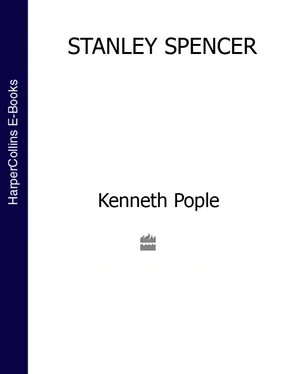



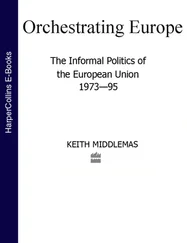




![Brian Thompson - A Monkey Among Crocodiles - The Life, Loves and Lawsuits of Mrs Georgina Weldon – a disastrous Victorian [Text only]](/books/704922/brian-thompson-a-monkey-among-crocodiles-the-life-thumb.webp)
